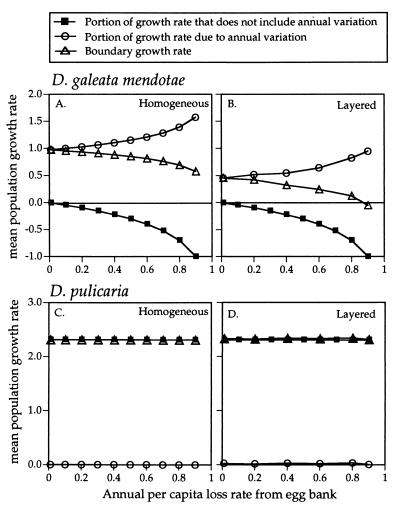Figure 2.
Mean population growth rates of D. pulicaria and D. galeata mendotae calculated by assuming a homogeneous egg bank (A and C) (Eqs. 4 and 5) and layered egg bank (B and D) using the “low” estimates for recruitment (see text for explanation). In each case, egg death rates ranged between 0.01 (long-lived egg bank) and 0.90. (A–D) ▪, That portion of the population growth rate that does not include recruitment variation; ○, that portion of the growth rate due to annual variation in recruitment; ▵, boundary growth rate (the sum of each circle/square pair). Squares that fall below the zero line indicate the death rate at which the population can no longer persist without variable recruitment. For D. galeata mendotae (A and B), all the squares fall below this line, indicating that this species can never persist without variable recruitment and reestablishment from the egg bank. Furthermore, at very high values of the egg death rate, the simulated boundary growth rate is negative (B), indicating that the population would not persist. For D. pulicaria (C and D), the storage effect is not necessary for long-term persistence.

